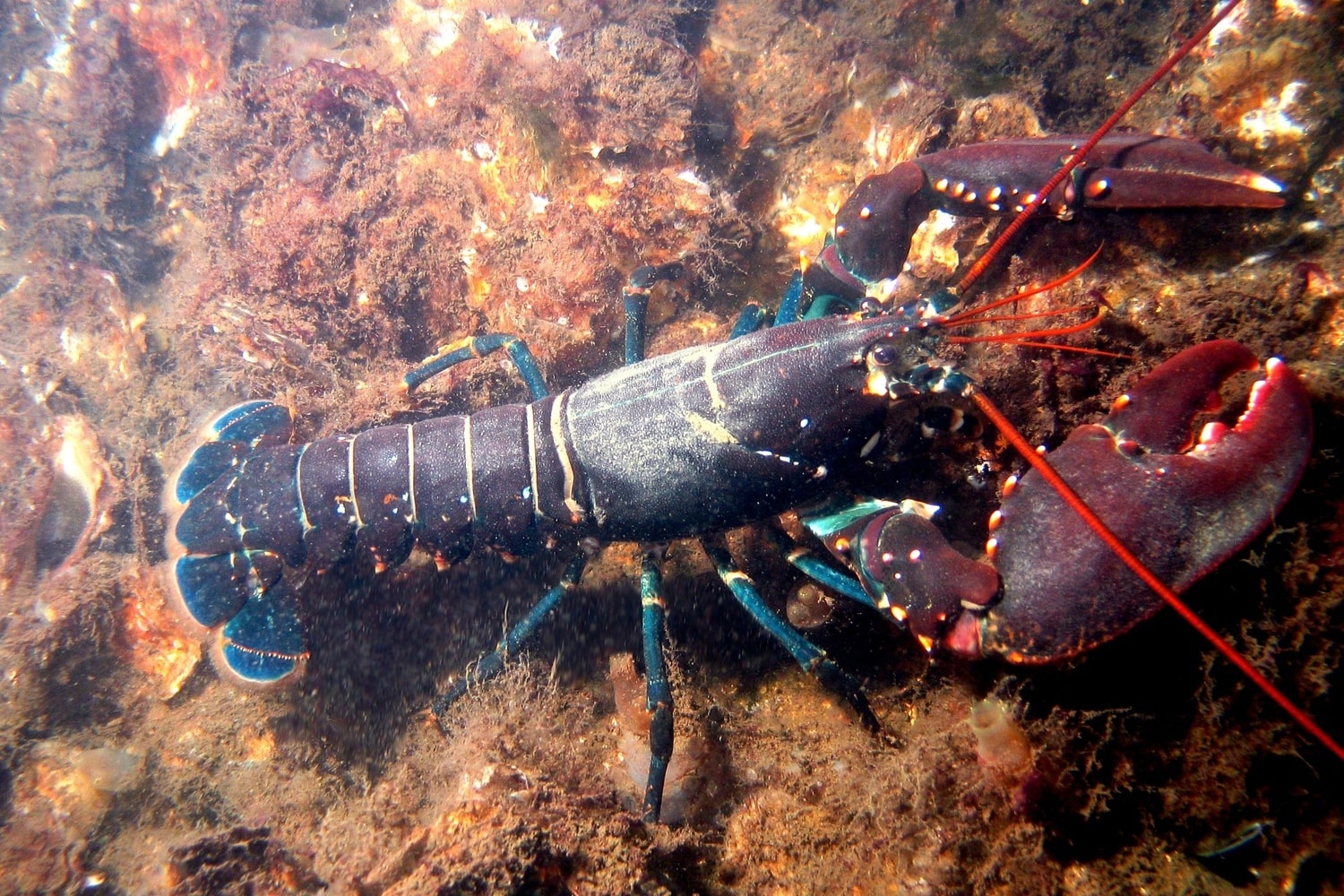The spiny lobster is a marine crustacean known for its striking appearance and high culinary value. It is often confused with the clawed lobster, although there are many differences between the two. Spiny lobsters live in the warm waters of the Atlantic Ocean, the Mediterranean Sea, the Caribbean, and some regions of the Pacific Ocean. They have been important to humans for centuries, from fishing practices to their place in culture. Below you will find interesting facts about spiny lobsters that you might not know.
- The spiny lobster does not have claws, unlike the true lobster. Its main defense and sensory tools are its long and strong antennae, which help it protect itself and navigate in the dark. Thanks to this feature, it is easy to distinguish it from other large crustaceans. This anatomical trait makes it unique among marine animals.
- A spiny lobster can reach more than 60 centimeters in length, and some individuals can weigh up to 5–6 kilograms. However, smaller specimens are more commonly caught in fisheries. Its body is protected by a hard shell that deters predators. Its large size makes it a prized catch for fishermen.
- The shell of a spiny lobster is brightly colored, ranging from shades of brown to red, often with distinctive patterns. When cooked, it turns a vivid red, which makes it especially attractive on the table. This color change occurs due to pigment transformation under heat. This feature is common to many crustaceans.
- Spiny lobsters are nocturnal creatures. During the day, they hide in rocky crevices or among coral reefs, and at night they go out in search of food. This behavior helps them avoid predators and conserve energy. They are most active after dark.
- Spiny lobsters feed on small mollusks, worms, fish, and organic debris. They act as cleaners of the sea by consuming remains. Their diet makes them an important part of the ecological chain. Thanks to this, they play a significant role in maintaining the cleanliness of the marine environment.
- Spiny lobsters have a very well-developed sense of smell. Their antennae allow them to detect scents from long distances. This ability helps them locate food even in dark depths. Their sensory system ensures their survival.
- A spiny lobster can live up to 20 years. This is considered a long lifespan for a marine crustacean. During its life it molts many times, shedding its old shell and growing a new one. Molting allows it to grow and regenerate damaged body parts.
- In moments of danger, a spiny lobster can produce a distinctive squeaking sound. It is created by rubbing its antennae against its shell. This signal can scare off predators and warn other individuals. It is one of the ways they communicate in their environment.
- The spiny lobster does not swim like a clawed lobster but mainly moves along the sea floor. It uses its strong legs to crawl slowly but steadily among rocks. When threatened, it can quickly push itself backward with its tail. This escape technique often saves it from predators.
- During migrations, spiny lobsters can form long chains, walking one after another. These columns may consist of hundreds of individuals. This phenomenon greatly impresses researchers. In this way, they move to new areas in search of food.
- Reproduction of spiny lobsters takes place in the open sea. Females carry eggs attached to the underside of their bodies. After hatching, the larvae go through several developmental stages before becoming young lobsters. This cycle ensures a high population.
- In gastronomy, spiny lobster is valued as highly as clawed lobster. Its meat is tender, juicy, and slightly sweet in flavor. It is widely used in Mediterranean and Caribbean cuisines. In many countries, spiny lobster is considered a delicacy.
- Spiny lobsters often appear in art and culture. They symbolize abundance, wealth, and luxury. In some regions, they have become part of traditions and celebrations. This highlights their importance to people.
- Despite being numerous in some regions, spiny lobster populations are declining due to overfishing. They are of great commercial importance, which puts them at risk of depletion. Special conservation programs and marine reserves are created to protect them. Safeguarding this species is a vital task today.
- A spiny lobster is able to regenerate lost limbs. If it loses a leg or an antenna in a fight with a predator, these parts can grow back over time. This ability helps it remain viable even after injury. Regeneration takes place over several molting cycles.
- Some species of spiny lobsters are bioluminescent due to symbiotic luminous bacteria. This phenomenon helps them orient themselves in the dark. The glow can scare away predators or attract prey. It is another extraordinary adaptation of these creatures.
The spiny lobster is a remarkable inhabitant of the ocean depths, combining beauty, usefulness, and unique traits. Its life is full of details that help us better understand the richness of the marine world. These fascinating facts broaden our knowledge of nature and remind us of the need to protect it. You might not know that creatures like spiny lobsters are what make the seas so diverse and beautiful.





